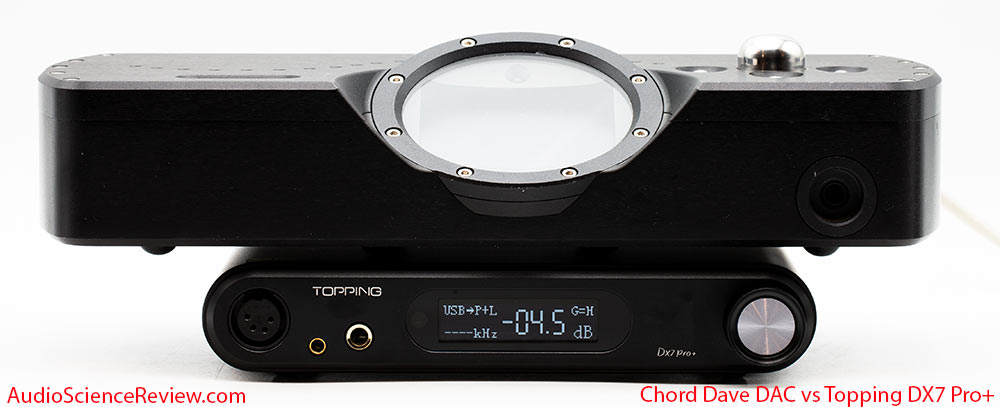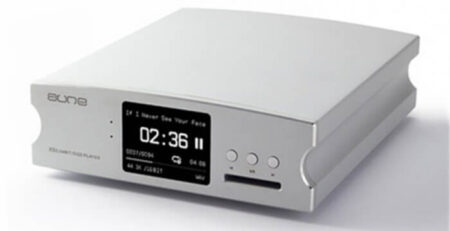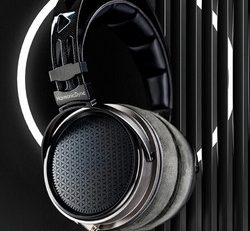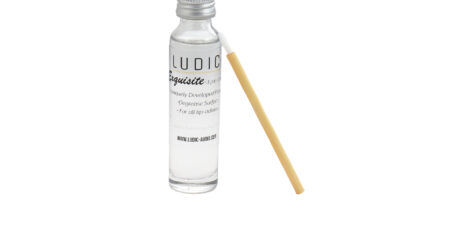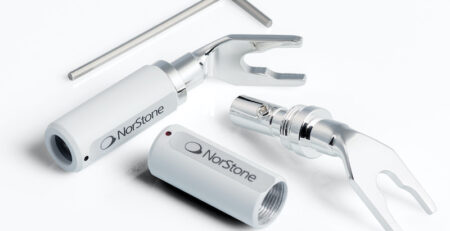Topping DX7 Pro+ $699,- easily outperforms the Chord DAVE DAC $6,725
DAC Noise Modulation: Chord DAVE vs Topping DX7 Pro+
In one of the Chord TT2 review thread, I was asked to comment on noise modulation claims by the product designer Rob Watts. I attempted to recreate his measurements and compare them to Topping DX7 Pro+ which I just reviewed.
DAC Noise Modulation
Noise modulation refers to noise floor of the DAC changing with signal. To the extent the signal changes, if the noise floor changes with it, it is said to be “modulated.” An ideal DAC would keep its noise floor constant as one has (ideally) nothing to do with the other. In reality activities of the DAC can manifest itself as extra noise, raising that component of the signal.
Chord DAC Claimed Lack of Noise Modulation
Rob Watts claims his DAVE DAC to be completely free of noise modulation and being the only DAC to be so. He backs it with the following measurement:
Notations in red are mine. This is the text below the graph:
Before getting into the details, the graph shows two overlaid measurements. One is when the DAC is producing a 2.5 volt signal, and the other, when it is producing nothing. From the graph it appears that the noise floor is the same in both measurements, backing what he says.
I wanted to replicate his measurements so that I could test other DACs to see how well they do. As I note above in red, this is made difficult by lack of documentation in the above measurements. The noise floor that you see is the result of both DAC noise and how much FFT has reduced it (called “FFT Gain”). I can make that noise floor as low as I want as long as I keep increasing the number of FFT points. As a result, the comments Rob makes about how low the noise floor is, i.e. -180 dB, is useless. That is NOT the actual noise floor of the DAC. So that claim is wrong although in the context of this comparison, it can be ignored. That is, both the no signal and 2.5 signal measurement are subject to the same FFT gain.
For some odd reason, the output voltage is picked to be 2.5 volt for a DAC that can go up to 6 volts. I suspect this may have been picked because it shows least distortion. So on that front, the claim of low distortion is also misleading especially since 0 dB is NOT set to 2.5 volt. Instead, it is set to 6 volt. In reality then, distortion is NOT -150 dB but something close to -142 dB. But again, in the context of comparing noise floors, we can ignore this.
Noise Modulation Comparison
I took the above graph and applied it to measurements of Topping DX7 Pro+. I played with the FFT samples and measurement bandwidth until I got something similar to DAVE DAC. Something still bothered me though. The measurements I performed of the DAVE DAC did not produce such a clean output. So I stepped back and ran the test against DAVE DAC which I happen to still have (owner is on long vacation). Here are the results for DAVE:
We see very different results. Distortion products are much higher (in relative terms) and so is the noise floor. What is more, there is noise modulation although in reverse. Noise floor actually goes up instead of down with no signal! Strange. To measure how much it is changing, I first compensated for FFT gain of 48 dB and then smoothed the two graphs:
Smoothing screws up the 1 kHz tone so ignore that as all we care about is the noise floor differential which is 2.8 dB. It is changing from -114 dB to -111 dB. This is barely above best case threshold of hearing. So in an extreme case of 1 kHz tone NOT being audible, and with suitable amount of amplification, one may be able to hear that modulation.
Now let’s run the exact same test but simply moving cables from DAVE DAC to Topping DX7 Pro+:
We immediately see confirmation of my reviews of both products: Topping DX7 Pro+ despite costing 20 times less, has much lower noise floor. It seems to have more distortion spikes but that is because the noise floor is so low, allowing them to peak through. In absolute levels, it is still superior to DAVE DAC by 6 dB.
It does show noise floor modulation and this time, as expected noise floor goes up with signal. Smoothing and compensating for FFT gain we get:
The average noise modulation is 4.2 dB which is just slightly more than DAVE DAC. However, in this case, the modulation is occurring at -130 dB to -127 dB. With threshold of hearing at -115 dB, no way this is remotely audible no matter what contrived test we create for it. It is a completely non-issue and the reason I don’t measure it.
Note: these tests are pushing limits of physics and instrumentation. Distortion measurements at -150 dB and lower is just crazy! It is unknown how accurate the AP is in this regard. Ditto for its own noise floor/modulation. When I first started to test the DAVE dac it had small train of pulses which disappeared after warming up. So some variation is to be expected in such tests.
Conclusions
This investigation of noise modulation shows that not only does the DAVE DAC perform worse than shown, but it also suffers from some noise modulation. While this noise modulation is slightly (0.5 dB) less than Topping DX7 Pro+, it happens at the threshold of hearing which may make it audible in pathological situations. Topping DX7 Pro+’s noise floor and modulation thereof is so far below audible threshold that it simply is not an audible concern in any contrived situation.
Maybe company’s claim that it is the best there is was due to understanding of DAC performance years back (Rob Watts’ post is from 2015 although renewed in 2021). This is certainly not true today where a $699 Topping DX7 Pro+ easily outperforms the DAVE DAC on both distortion and noise performance.
Company needs to provide comparative measurements to other current DACs before continuing to make such objective performance claims. And certainly not push points that are not the strength of its DAC, i.e. noise performance.
Bottom line, noise modulation is not a performance metric to worry about in well implemented DACs.



